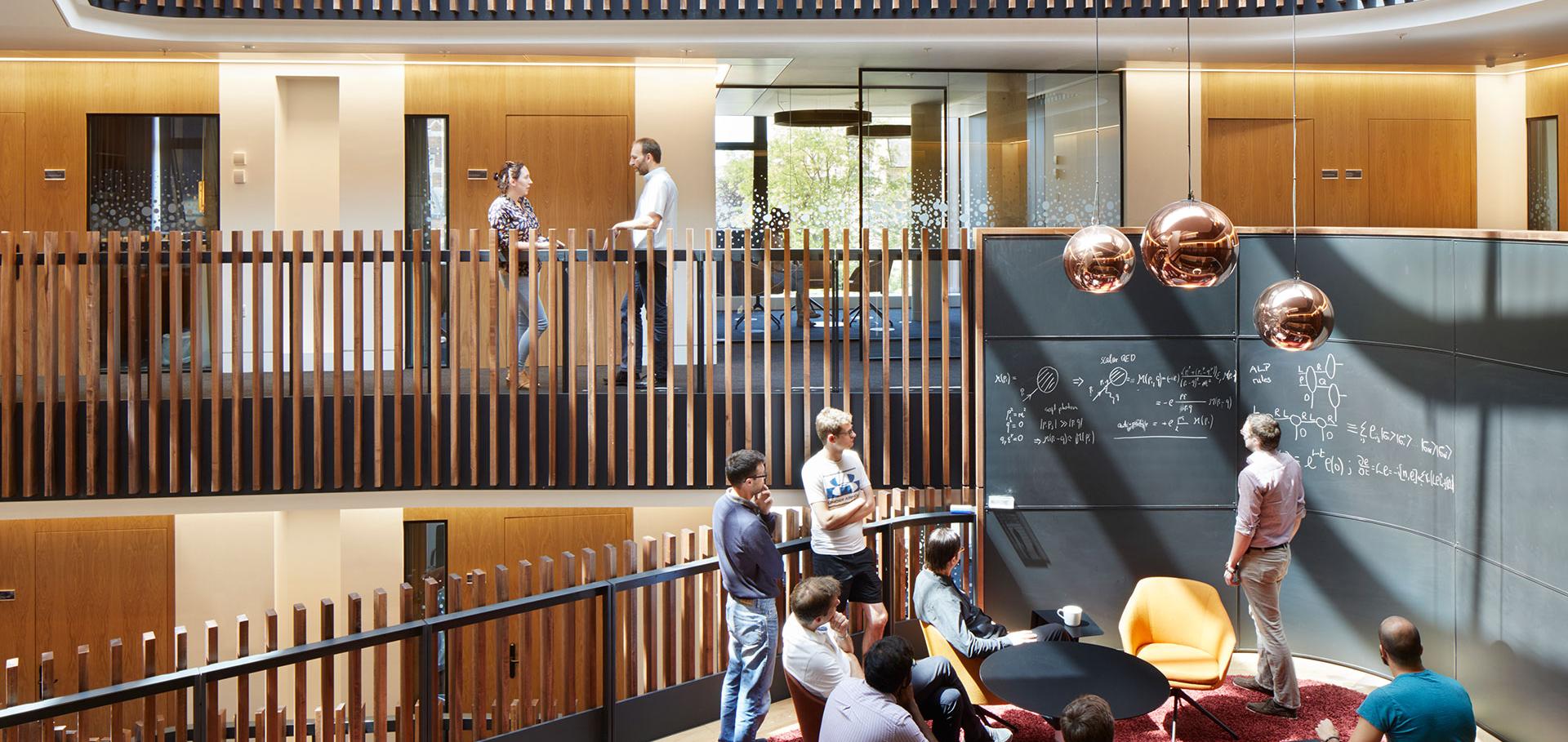A Million Three-body Binaries Caught by Gaia
The Astrophysical Journal American Astronomical Society 993:2 (2025) 183
Abstract:
Gaia observations have revealed over a million stellar binary candidates within ∼1 kpc of the Sun, predominantly characterized by orbital separations >103 au and eccentricities >0.7. The prevalence of such wide, eccentric binaries has proven challenging to explain through canonical binary formation channels. However, recent advances in our understanding of three-body binary formation (3BBF)—new binary assembly by the gravitational scattering of three unbound bodies (3UB)—have shown that 3BBF in star clusters can efficiently generate wide, highly eccentric binaries. We further explore this possibility by constructing a semi-analytic model of the Galactic binary population in the solar neighborhood, originating from 3BBF in star clusters and subsequently migrating to the solar neighborhood within a Hubble time. The model relies on 3BBF scattering experiments to determine how the 3BBF rate and resulting binary properties scale with local stellar density, velocity dispersion, and physically motivated limits to 3UB encounters within a clusters’ tidal field. The Galactic star cluster population is modeled by incorporating up-to-date prescriptions for the Galaxy’s star formation history as well as the birth properties and internal evolution of its star clusters. Finally, we account for binary disruption induced by perturbations from stellar interactions before cluster dissolution and the subsequent changes and disruption of binary orbital elements induced by dynamical interactions in the Galactic field. Without any explicit fine-tuning, our model closely reproduces the total number of Gaia’s wide binaries and the separation and eccentricity distributions, suggesting that 3BBF may be an important formation channel for these enigmatic systems.Large-scale-structure observables in general relativity validated at second order
Journal of Cosmology and Astroparticle Physics IOP Publishing 2025:10 (2025) 105
Abstract:
We present a second-order calculation of relativistic large-scale-structure observables in cosmological perturbation theory, specifically the “cosmic rulers and clock”, which are the building-blocks of any other large-scale-structure observable, including galaxy number counts, on large scales. We calculate the scalar rulers (longitudinal perturbation and magnification) and the cosmic clock to second order, using a fully non-linear covariant definition of the observables. We validate our formulæ on three non-trivial space-time metrics: two of them are null tests on metrics which are obtained by applying a gauge transformation to the background space-time, while the third is the “separate universe” curved background, for which we can also compute the observables exactly. We then illustrate the results by evaluating the second-order observables in a simplified symmetric setup. On large scales, they are suppressed over the linear contributions by ∼10-4, while they become comparable to the linear contributions on mildly non-linear scales. The results of this paper form a significant (and the most complicated) part of the relativistic galaxy number density at second order.Gravitational turbulence: The small-scale limit of the cold-dark-matter power spectrum
Physical Review D American Physical Society (APS) 112:6 (2025) 063501
Abstract:
The matter power spectrum, , is one of the fundamental quantities in the study of large-scale structure in cosmology. Here, we study its small-scale asymptotic limit, and show that for cold dark matter in spatial dimensions, has a universal asymptotic scaling with the wave number , for , where denotes the length scale at which nonlinearities in gravitational interactions become important. We propose a theoretical explanation for this scaling, based on a nonperturbative analysis of the system’s phase-space structure. Gravitational collapse is shown to drive a turbulent phase-space flow of the quadratic Casimir invariant, where the linear and nonlinear time scales are balanced, and this balance dictates the dependence of the power spectrum. A parallel is drawn to Batchelor turbulence in hydrodynamics, where large scales mix smaller ones via tidal interactions. The scaling is also derived by expressing as a phase-space integral in the framework of kinetic field theory, which is analyzed by the saddle-point method; the dominant critical points of this integral are precisely those where the time scales are balanced. The coldness of the dark-matter distribution function—its nonvanishing only on a -dimensional submanifold of phase space—underpins both approaches. The theory is accompanied by 1D Vlasov-Poisson simulations, which confirm it.Detection prospects for the GW background of galactic (sub)solar mass primordial black holes
Journal of Cosmology and Astroparticle Physics IOP Publishing 2025:05 (2025) 036


